Last Updated: 7 October 2025
How to Play Texas Hold’em: Rules, Hand Ranks & Odds
Master how to play Texas Holdem quickly with our guide to the rules, hand rankings, and odds. Discover the essentials to playing online Hold'em games profitably, and learn the best strategies to play like a pro from the get-go.
Guides
What is Texas Hold’em?
Texas Hold’em is the most popular version of poker worldwide. It is played in casinos, online poker sites, televised livestreams, and home games. The poker boom of the early 2000s brought the game to the attention of millions, and it remains the standard variant in tournaments and cash games today.
Texas Hold’em is fast and easy to learn compared to other poker formats. Each player receives two private cards and uses five shared community cards to make the best five-card hand. While simple at first, the depth of betting and bluffing makes the game endlessly engaging.
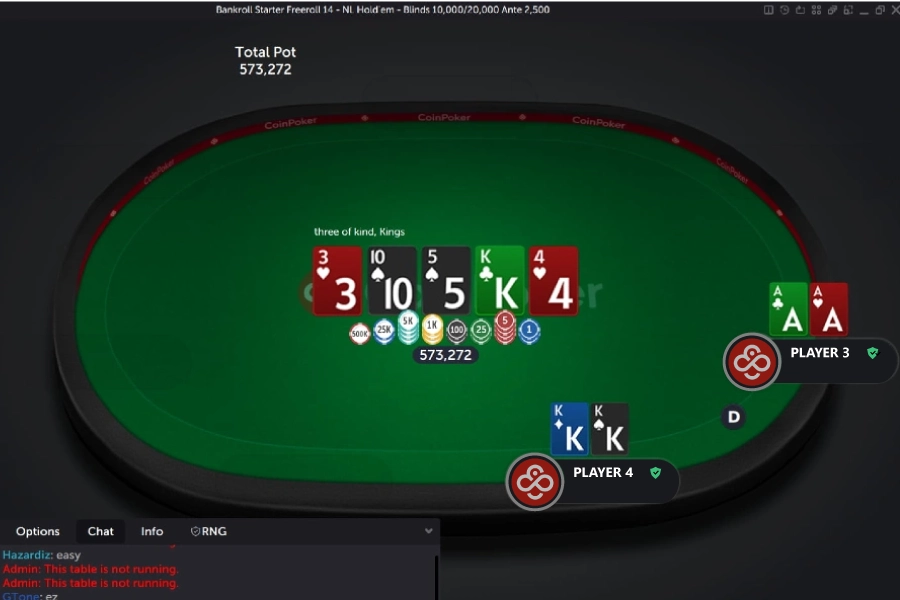
Texas Hold’em Rules: What to Know Before Playing
The game’s beauty is in its simplicity, so before sitting at the poker table, familiarize yourself with these easy-to-understand Texas Hold’em rules:.
- Two bets, the small blind and the big blind, start the game.
- The blinds are posted after the dealer and move clockwise around the table when a game finishes.
- Each player gets two private cards, called hole cards.
- Betting occurs in four rounds: preflop, flop, turn, and river.
- Five community cards are dealt face-up. Three on the flop, one on the turn, and one on the river.
- Players use any combination of their cards and community cards to make the best five-card hand.
- After the river card (shown below) the best hand at showdown, or the last player left, wins the pot.
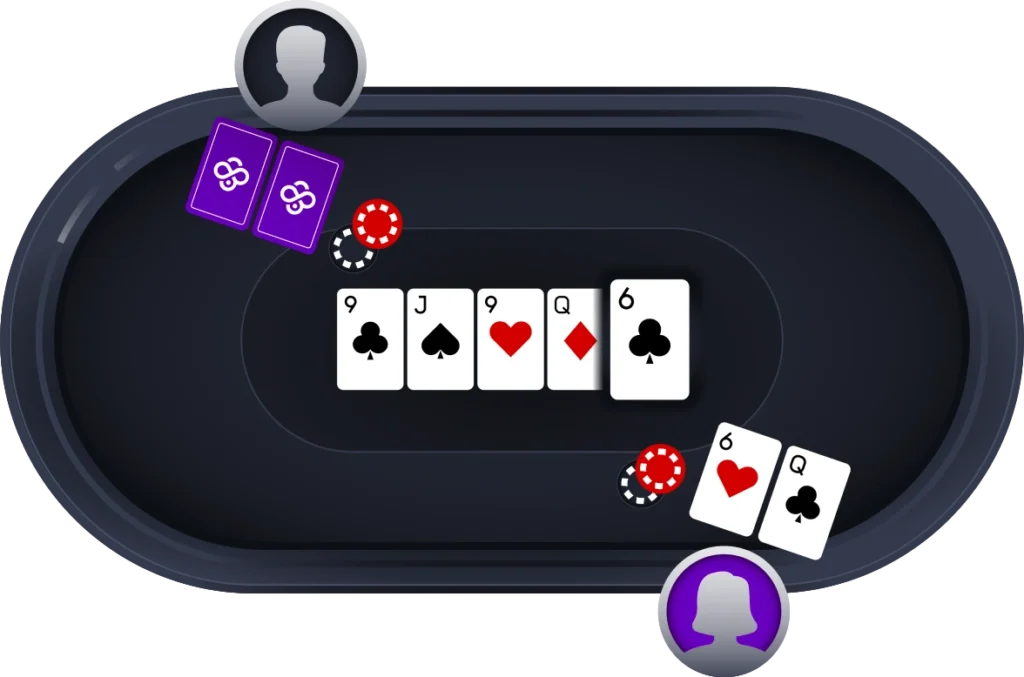
How No-Limit Betting Works in Texas Hold’em
Most Hold’em games follow no-limit rules, meaning you can bet any amount of your chips when it’s your turn. No maximum bet limit rule means you can bet all your chips in one move, known as going all-in.
Unlike fixed-limit or pot-limit betting, no-limit Holdem offers more flexibility. You can bet small, raise gradually, or go all-in during any of the four betting rounds. This complete control over betting amounts is one reason why the game is so popular among players.
How to Make Hand Combinations in Texas Hold’em
Players build hands in Texas Hold’em using five cards, taken from any combination of their two hole cards and the five community cards on the table.
You can use both hole cards, one, or even none. This flexibility means the winning hand might come entirely from the board, or from a mix of hole cards and community cards.
Texas Hold’em Hand Rankings: Learn What Beats What
Knowing the hand rankings in Texas Hold’em is a crucial yet basic skill. Luckily, which hands beat others in Hold’em will quickly become familiar as you play the game. Wondering if a full-house beats a flush? Here’s a useful table for you to check the strength of your hand:

How to Play Texas Hold’em: Step-by-Step Guide
The next important aspect of understanding Texas Hold’em is knowing how the game plays out.
We’ve created this easy step-by-step guide to walk you through each stage.
1. Place the Big Blind and Small Blind
Firstly, before any cards are dealt, two players post blind bets. The small blind is half the minimum bet, and the big blind is the full minimum. Blinds rotate clockwise after each hand to ensure every player contributes equally.
Image: Player for has Pocket Kings in the Small Blind position.
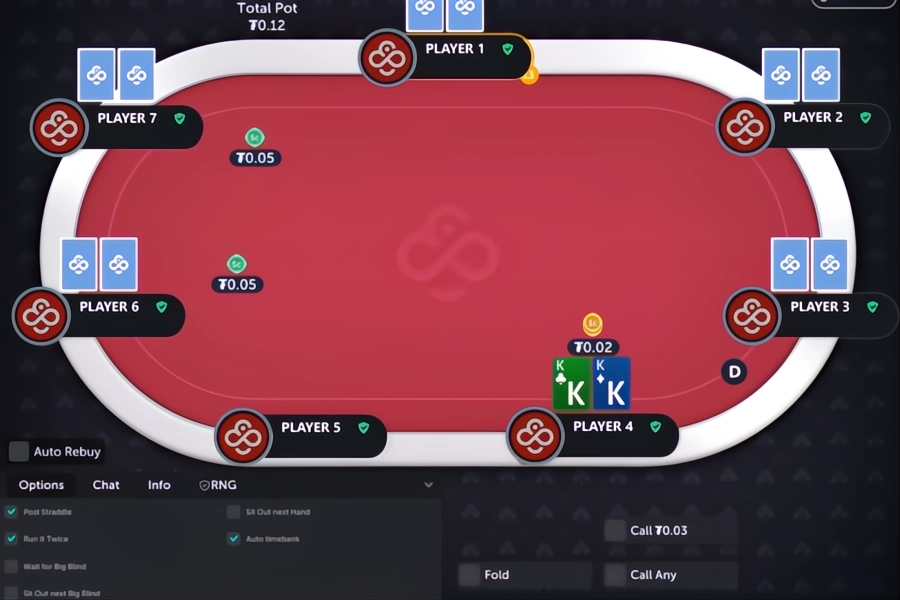
2. Choose to Check, Call, Fold, or Raise
After receiving two hole cards, players act in turn, starting left of the big blind. You can fold to give up your hand, call to match the current bet, raise (and re-raise) to increase it, or check if no bet has been made.
Image: Player 4 decides to fold, call, or raise when the action reaches them.
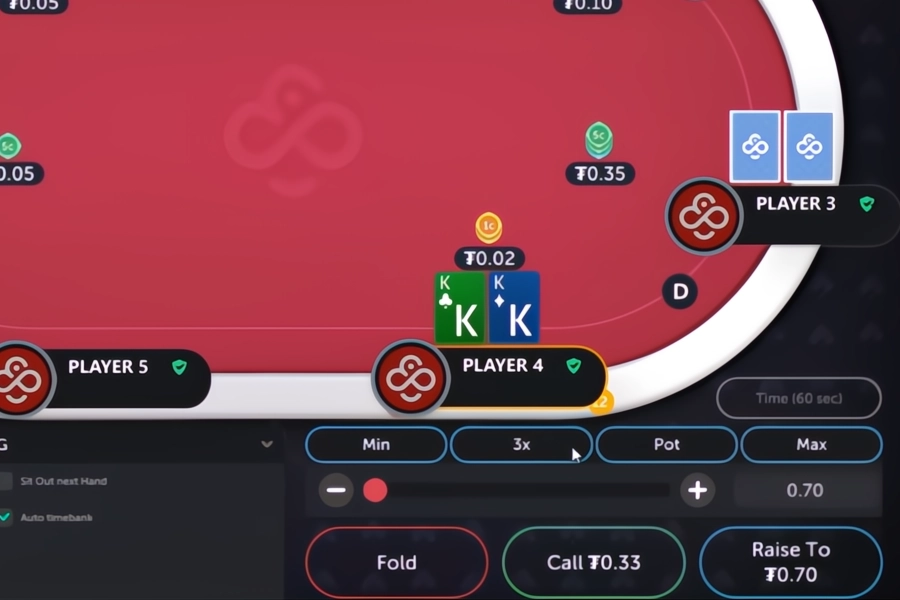
3. See the Flop and 3 Community Cards
Three community cards are dealt face-up in the center of the table. All players share these cards and can use them to improve their hands. A new betting round begins with the first active player to the left of the dealer.
Image: The flop is 5h Jh Ts and Player 4 has an overpair.
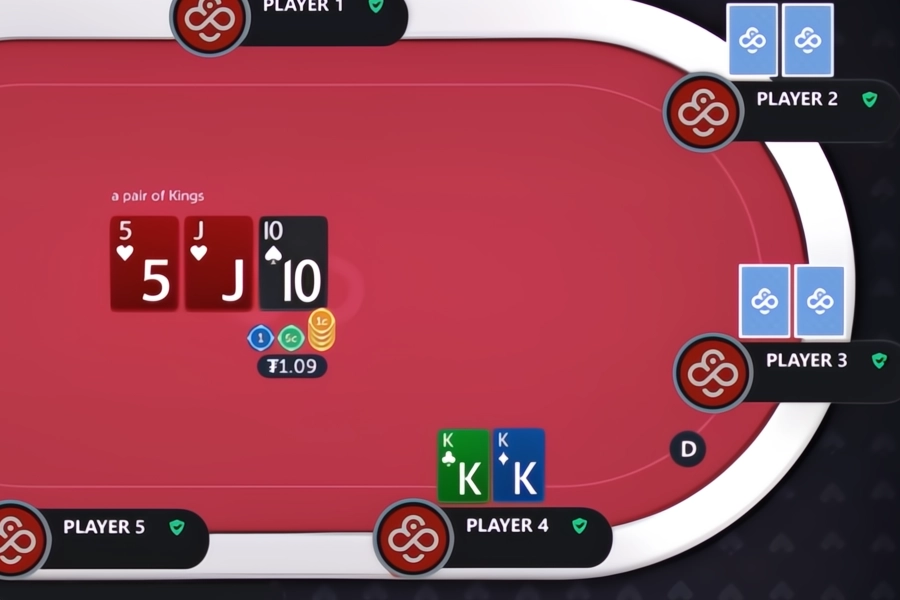
4. Choose Your Action for the Flop Round
Players decide whether to check, bet, call, fold, or raise at this stage. The round continues clockwise until all bets are matched. The community cards are now partly revealed, with only the turn and the river to come.
Image: Player 4 decides to check or bet.
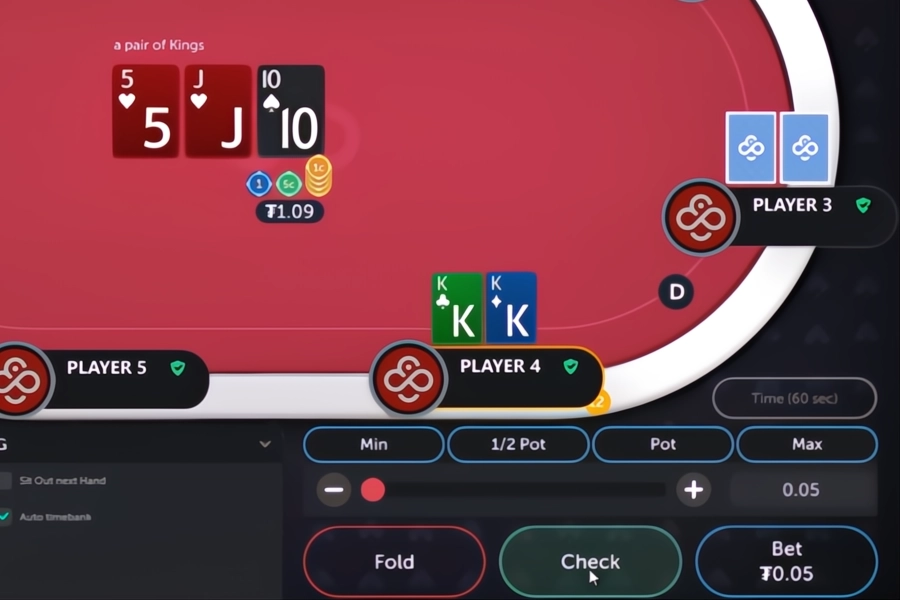
5. Deal the Turn Community Card
The fourth community card is dealt face-up. The turn adds further possibilities for hand combinations that can increase the size of the pot. Another betting round begins with the first active player to the left of the dealer.
Image: After checking the flop, Player 4 sees that the turn card is a 4 of Spades.
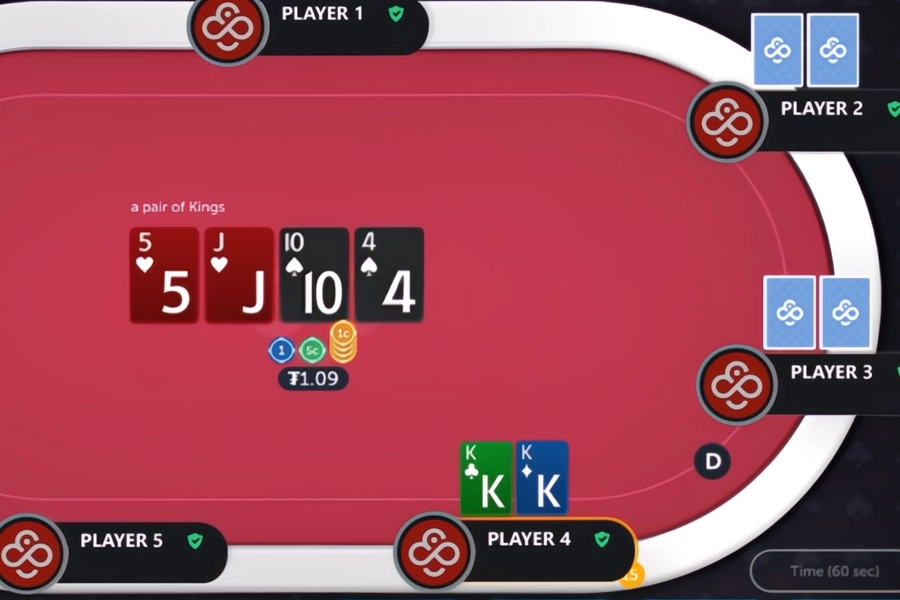
6. Choose Your Action for the Turn
Decisions are now more informed because four community cards are visible. Players can again check, bet, call, raise, or fold at this stage. Once the betting is over, only the fifth community card, the river, is left to be dealt.
Image: Player 4 bets $0.20, but another player raises to $0.40.
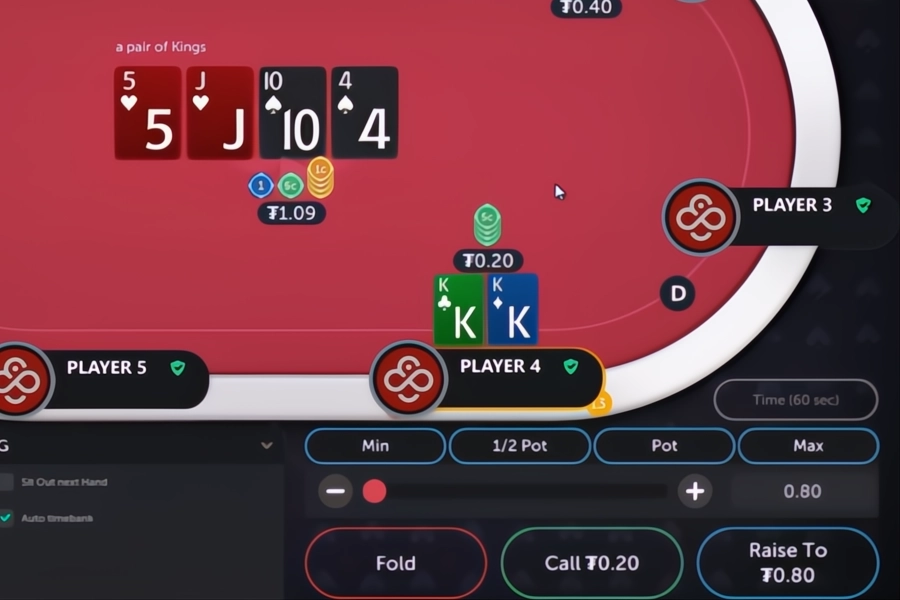
7. Deal the River Community Card
The river card is placed face-up, completing the five cards on the board. Players can now see their best 5-card poker hand. The final betting round begins with the first active player to the dealer’s left once again.
Image: Player 4 sees the river is a 7 of Clubs.
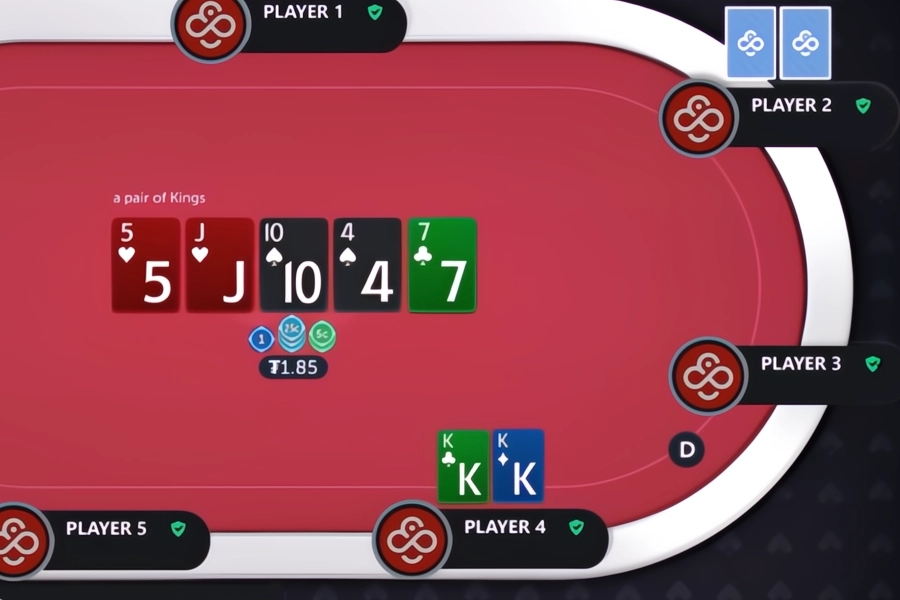
8. Choose Your Action for the River
With all community cards revealed, the last betting round begins. Players make final decisions based on the complete hand: check, bet, call, raise, or fold. Once the betting is complete, any remaining players move to the showdown.
Image: Player 4 checks, another player goes all-in and Player 4 must decide to call or fold.
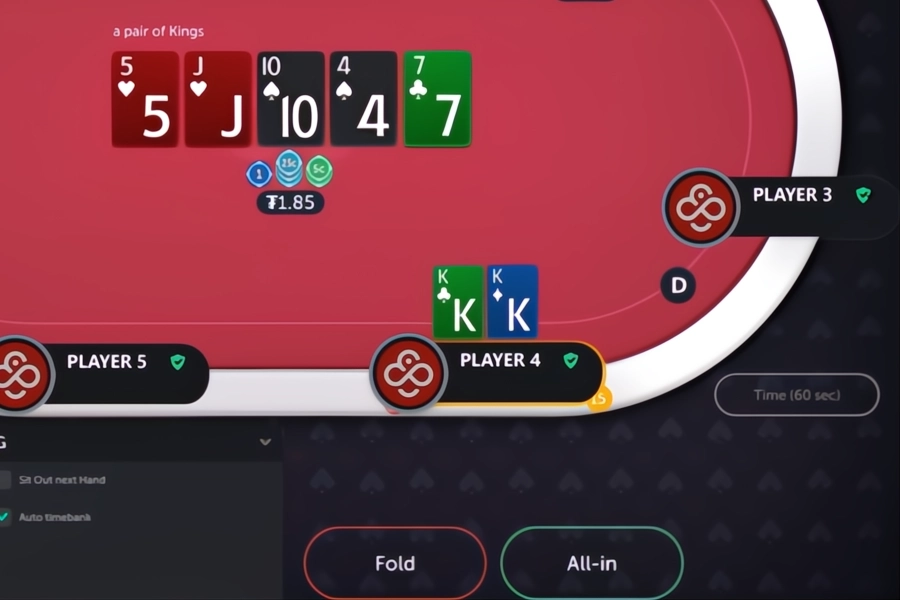
9. Showdown and Decide a Winner
All remaining active players reveal their cards after the river. The best five-card hand is confirmed and wins the pot, which is moved towards the winner. In case of a tie, the pot is equally split between the winning players.
Image: Player 4 calls, and their pair of Kings loses to the set of Fives from Player 2.
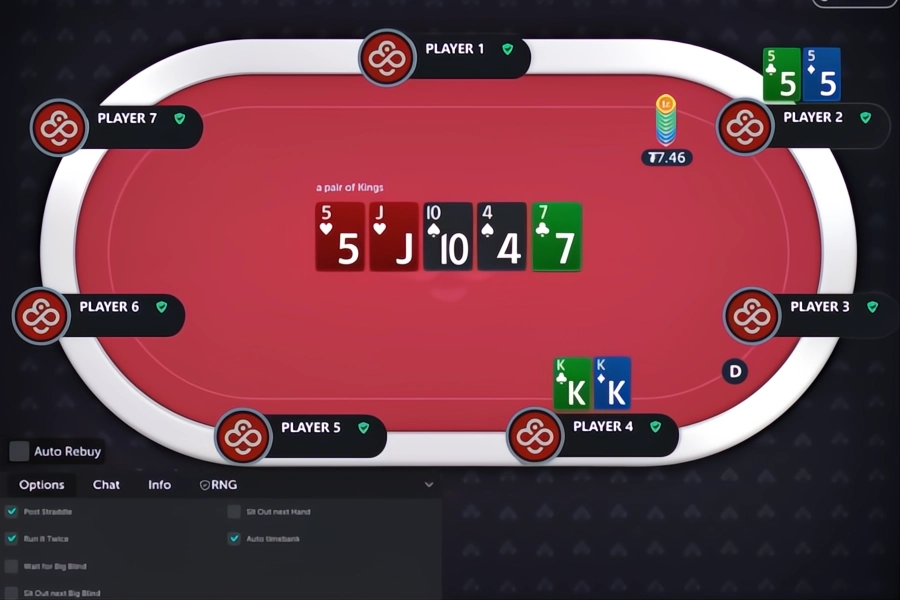
Texas Hold’em Odds: Use Math to Improve Your Decisions
Texas Hold’em is a game based mainly around skill, so understanding the math behind it can give you a decisive advantage. Poker odds show the likelihood of improving your hand or hitting a winning combination based on the remaining cards.
Here are some basic poker odds to inform your strategy, such as odds of being dealt hands and odds of drawing to hand combinations.
Odds of Being Dealt Hands in Texas Hold’em
Firstly, let’s look at the probability of being dealt specific hole cards in Texas Hold’em:
| Hand Type | Probability |
| Pocket Aces | 0.45% |
| Pocket Kings | 0.45% |
| Pocket Queens | 0.45% |
| Any Pair | 5.9% |
| Ace-King Suited | 0.30% |
| Ace-King Offsuit | 1.2% |
| Any Two Suited | 23.5% |
| Any Two Offsuit | 76.5% |
Odds of Drawing to Hand Combinations in Texas Hold’em
Your randomly drawn hole cards won’t influence your decision in Hold’em, as that’s simply how a hand begins. However, knowing the likelihood of drawing to a certain hand should greatly influence your action.
| Draw Type | Your Hand on The Flop | Probability by River |
| Flush Draw | You have four cards of the same suit and need one more on the turn or river to complete a flush | 35% |
| Open-Ended Straight Draw | You have four consecutive cards and can complete a straight with a card on either end | 31.5% |
| Inside Straight Draw | You need one specific card in the middle of a straight to complete it by the river | 16.5% |
| Two Overcards to Pair | You hold two cards higher than any on the board and are drawing to make a top pair on the turn or the river | 24% |
| Set Draw | You hold a pocket pair and are drawing to make three of a kind (trips) by the turn or river | 11% |
| Open-Ended Straight Flush Draw | You have four suited consecutive cards and can complete a straight flush with one card on the turn or the river | 4.25% |
Understanding these draw types and their probabilities allows you to make more informed decisions as you play Texas Hold’em.
Texas Hold’em Strategy: Learn the Basics and Level Up
Using our solid Texas Hold’em strategies for beginners lifts you from someone who understands Hold’em to someone who is hard to beat at the game.
Here are three essential strategies to take to the poker tables.
Enter pots with premium cards and apply pressure through confident raises. Focus on strong starting hands and avoid marginal spots that could lead to costly mistakes in the long run.
This disciplined approach might seem tedious, but a tight and aggressive style reduces risky situations, builds larger pots, and forces opponents into difficult choices. Pick your spots and bet assertively at the right moments.
Position is one of the most potent concepts in Texas Hold’em. Acting later in the betting round gives you more information about your opponents’ actions before you commit chips.
Late position, especially the dealer button, allows you to steal blinds, bluff more effectively, and extract value when you have a strong hand. In contrast, playing from an early position should be reserved for premium hands only.
Deception plays a massive role in Texas Hold’em, and bluffing is a powerful tool when used correctly. A novice mistake is to bluff too often when the key is selectivity.
The most effective bluffs happen in late position, while bluffing against one or two cautious players is far more successful than against multiple loose callers. Mix in semi-bluffs (drawing hands that can still improve) to balance your bluffing game.
Texas Hold’em Variants: Different Styles of Poker to Play
Texas Hold’em is the most popular poker format, but other great alternatives are ready.
Here are three great Hold’em variants to discover for yourself:
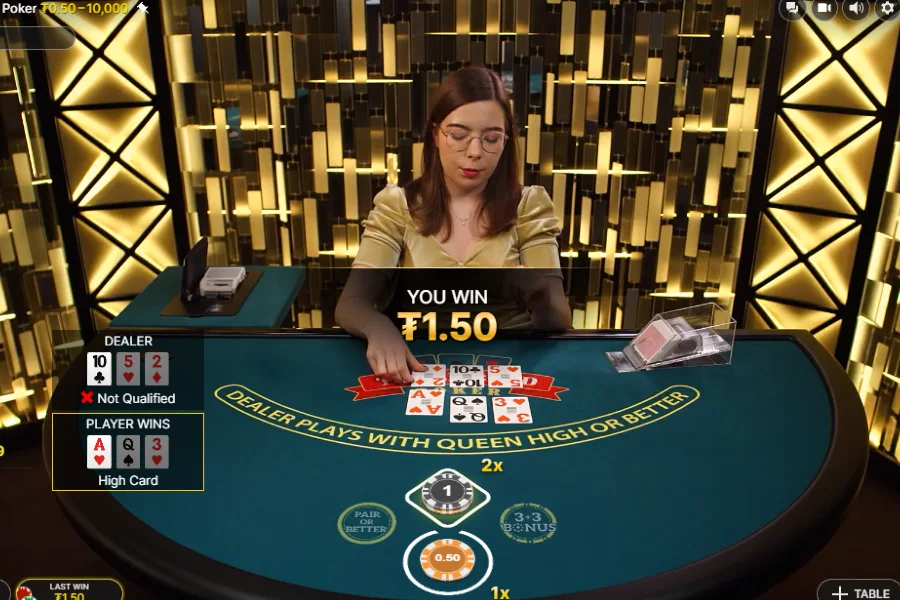
3-Card Poker: A fast-paced casino-style poker game where you only get three cards and aim to beat the dealer’s hand.
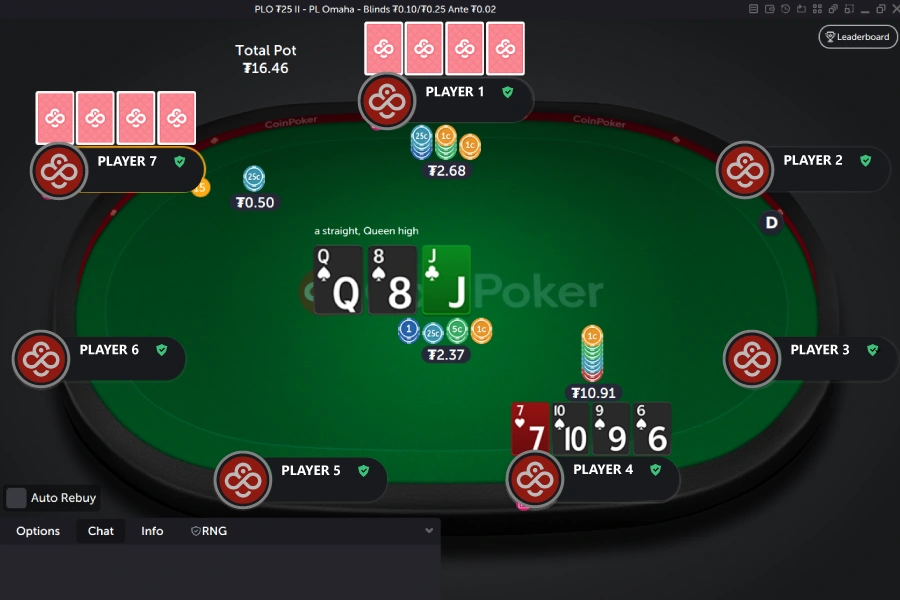
PLO & PLO5: Pot-Limit Omaha uses four or five hole cards instead of two, creating bigger pots and more action-heavy gameplay.
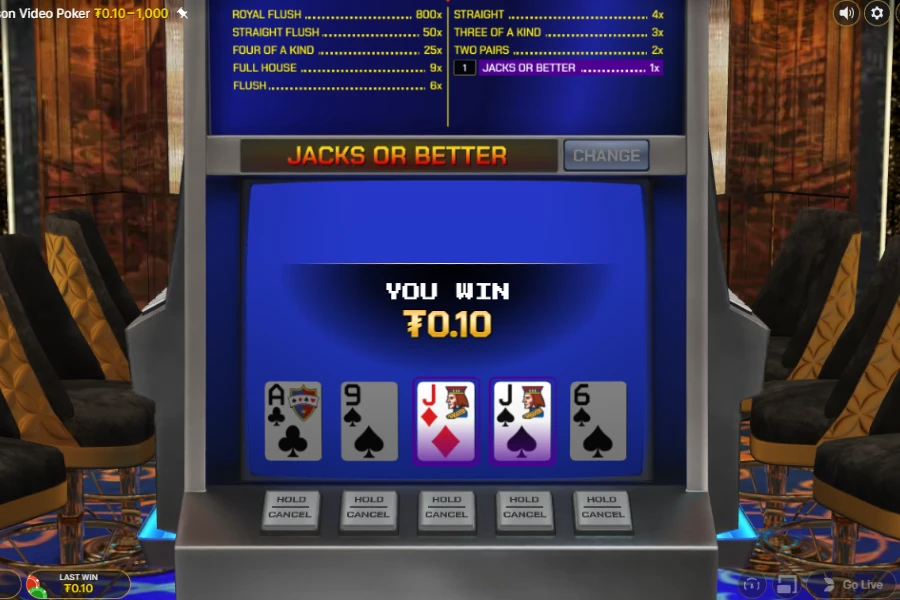
Video Poker: A mix of slots and poker where you play against a machine, building the best five-card hand possible.
The History of Texas Hold’em
The precise birthplace and date of Texas Hold’em isn’t known, but it is believed to have originated in Robstown, Texas, during the early 1900s.
But, who invented poker? The game was played widely through Texas until the 1960s, when a group of players introduced Hold’em to Las Vegas. Casinos quickly adopted the game, and it grew to become a staple across the bright-light city.
By the 1970s, Texas Hold’em was the centerpiece of the World Series of Poker. Televised coverage and the online poker boom in the 2000s cemented its reputation as the most popular form of poker worldwide.
Play Fair and Fun Texas Hold’em Games on CoinPoker
Now that you know how to play Texas Hold’em, it’s time to hit the tables at CoinPoker. Don’t miss out on a 150% first deposit bonus along with 33% weekly rakeback at the most trusted online poker room.
Our 24/7 Texas Hold’em games are ready for you, just register at CoinPoker now!
Related Texas Hold’em Articles
Learn more about Texas Hold’em at these pages:
FAQ
A royal flush is the best hand you can make, consisting of A, K, Q, J, and 10, all of the same suit. An example: A♠, K♠, Q♠, J♠, and 10♠.
Pocket aces are strongest, but any hand can win depending on play.
Typically, 2-10 players can participate at a single table, allowing for a range of strategic interactions.
Blinds are mandatory bets or forced bets that create initial action and ensure players are invested in the pot from the start of the hand.
Our tables start at $0.01/$0.02 stakes, perfect for beginners.
You must make the best hand at showdown or successfully bluff your opponents into folding their stronger hands.
Fold weak hands facing large bets or when you’re confident you don’t have the winning hand.
Explore More
Announcements
Read recent announcements from CoinPoker about new games, ambassadors, and changes to our platform.
8 PostsGuides
The go-to resource for mastering poker with expert tips and strategies. Whether you're a beginner or a pro, our guides will elevate your skill level.
60 PostsNews
Find the latest poker news from CoinPoker, plus our latest CoinPoker Weekly and Monthly Newsletters. Updates about games, promotions and other exciting crypto news.
88 PostsPromotions
Find the latest coinpoker promotions here. Explore the crypto poker world with the best poker promotions available.
1 Post
















